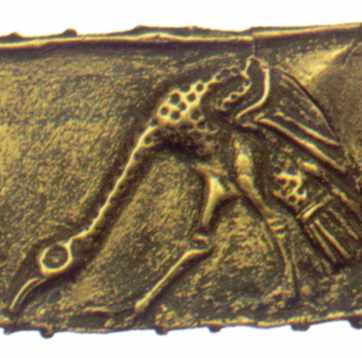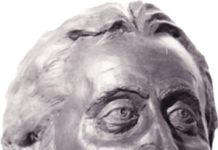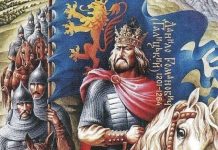Below are several quotes from the works of Robert Graves:
“It is not known what sort of a dance the Crane Dance was that, according to Plutarch, Theseus introduced into Delos except that it was performed around a horned altar and represented the circles that coiled and uncoiled in the Labyrinth. My guess is that it imitated the fluttering love-dance of courting cranes, and that each movement consisted of nine steps and a leap.
The nine steps prove her sacred to the Triple Goddess; and so does her neck, feathered white and black with reddish skin showing through, or (in the case of the Numidian, or Balearic, crane) with red wattles. Cranes make their spectacular migrations from the Tropic of Cancer to the Arctic Circle and back twice yearly, flying in chevron formation with loud trumpetings at an enormous height; and this must have attached them to the Hyperborean cult as messengers flying to the other world which lies at the back of the North Wind.”
“A peculiarity of wading birds such as the crane and heron is that, when they have speared a quantity of small fish in a river ready to take home to their young, they arrange them on the bank with the tails set together in the form of a wheel, which was formerly the symbol of the sun, and of the king’s life. This must have astonished the ancients.”
“In Greece the crane was associated with poets not only in the story of Apollo’s metamorphosis into ‘a crane, a Thracian bird’—meaning the red-wattled Numidian crane which visited the Northern Aegean— but in the story of Ibycus, the sixth-century B.C. Greek erotic poet who, having spent the best part of his life in the island of Samos, was one day set upon by bandits in a lonely place near Corinth and mortally wounded. He called upon a passing flock of cranes to avenge his death and soon afterwards the cranes hovered over the heads of the audience in the Corinthian open-air theatre; whereupon one of the murderers, who was present, cried out: ‘Look, the avengers of Ibycus!’ He was arrested and made a full confession.”
The last quote may provide a deeper meaning to the scene with the wading cranes on the gold plate from Lytoi Kurgan.
Hyperborea and Hyperborean Apollo are the subjects of several chapters in the “Cradle of Civilizations” hardcover book.










